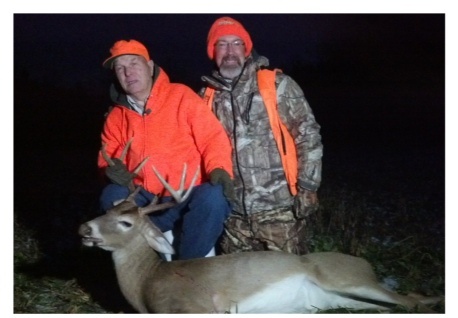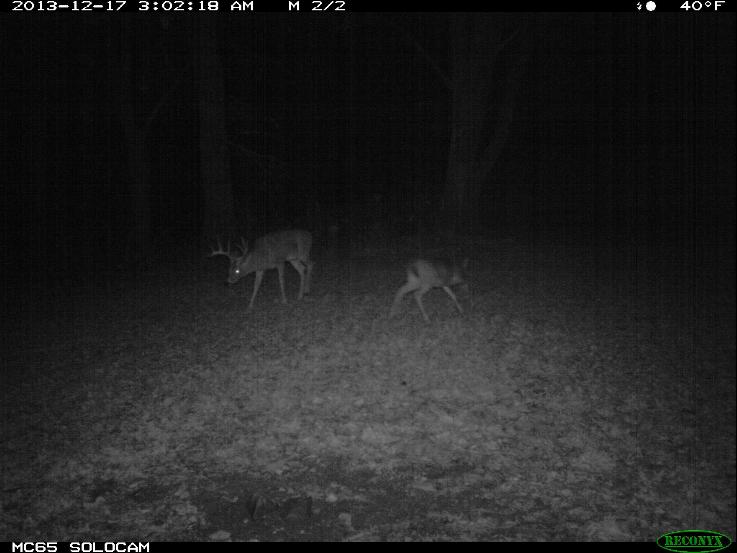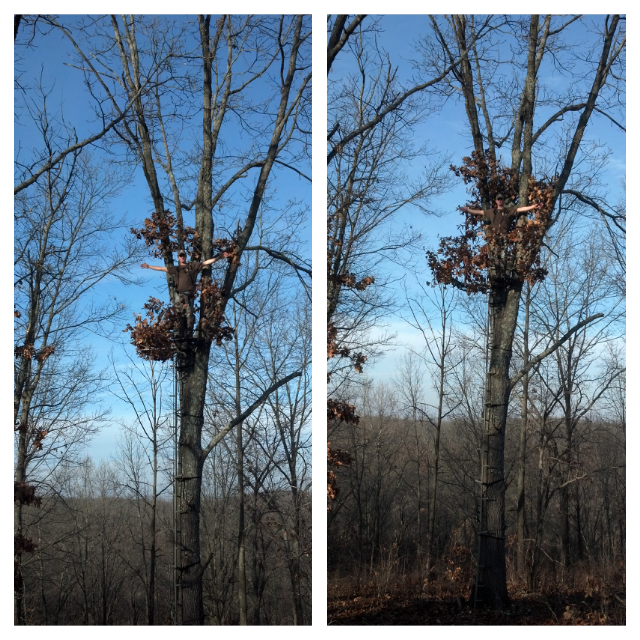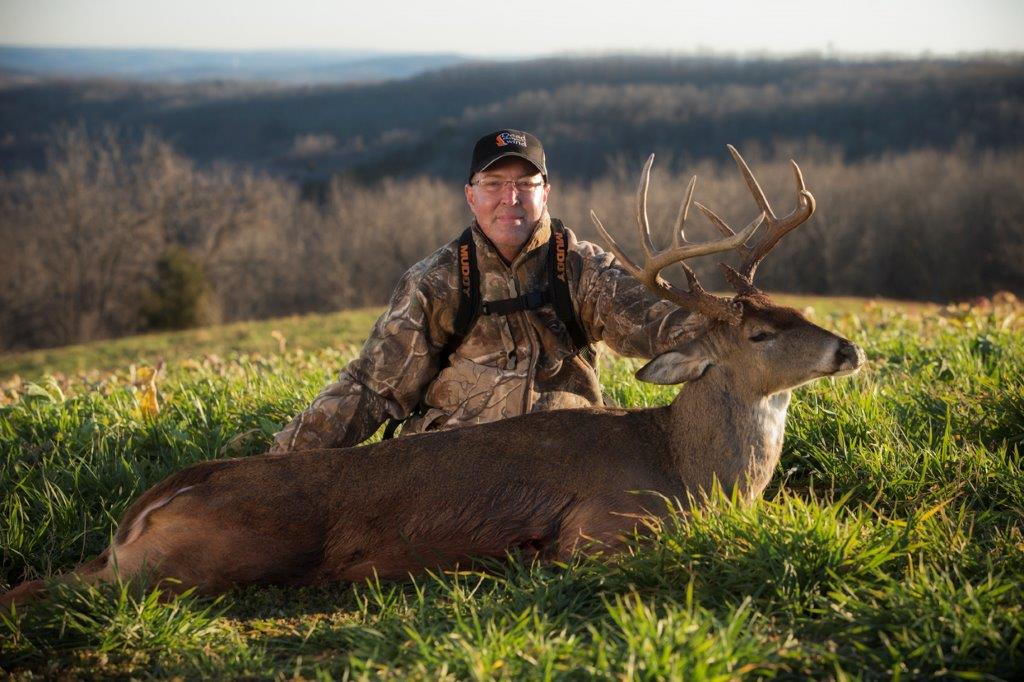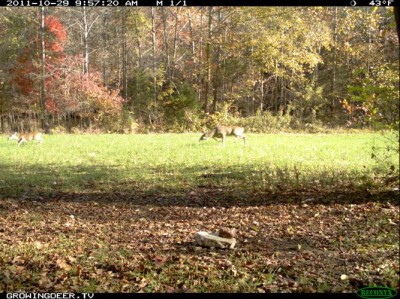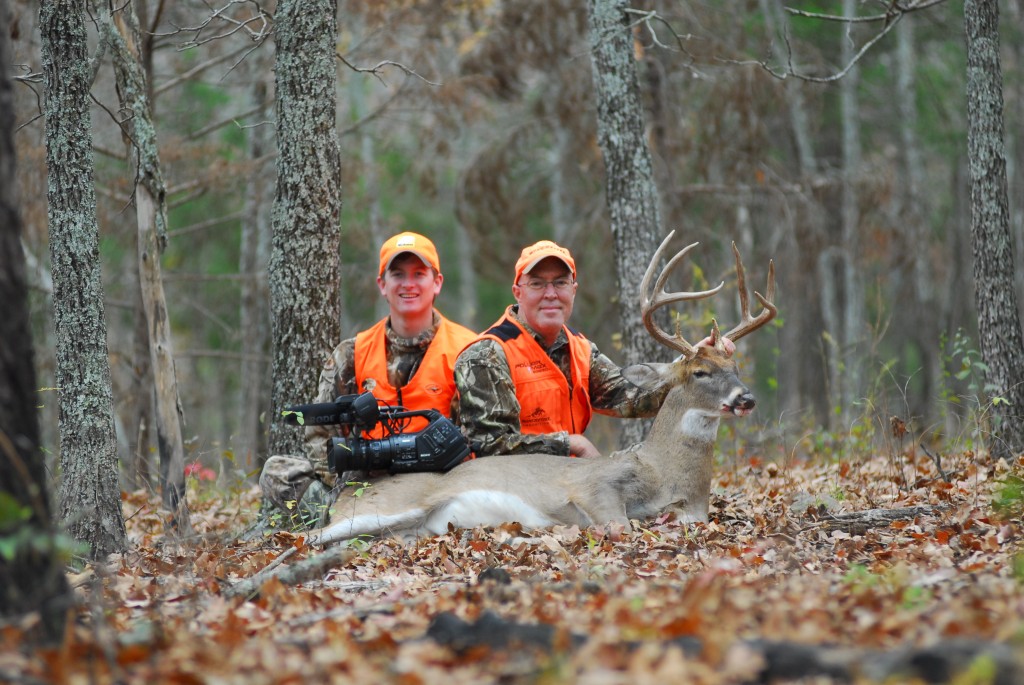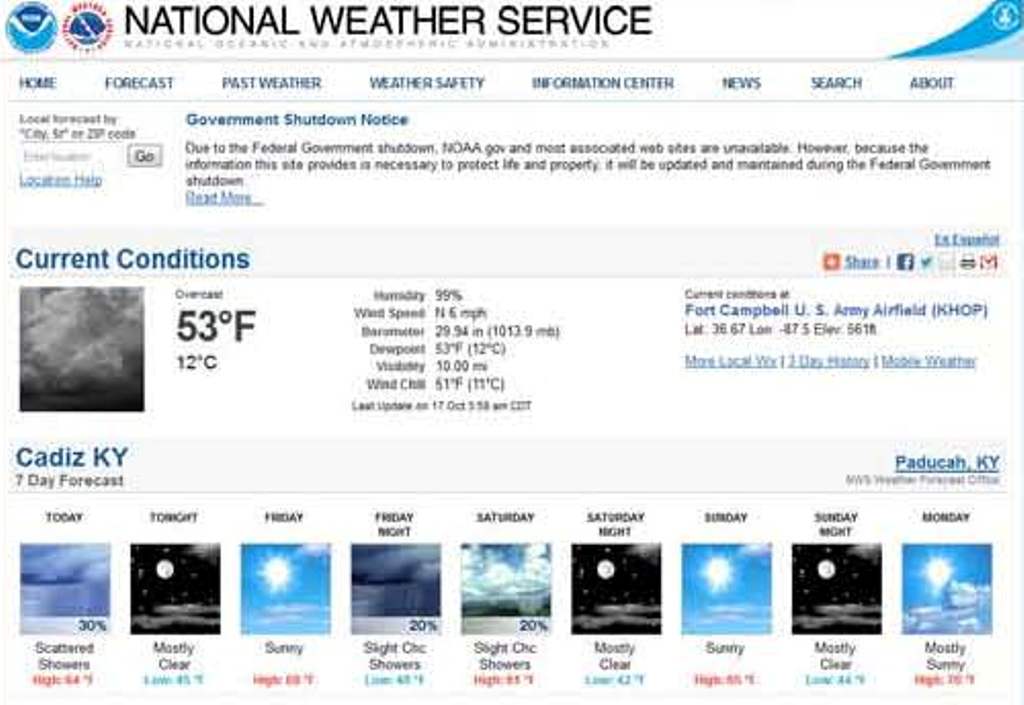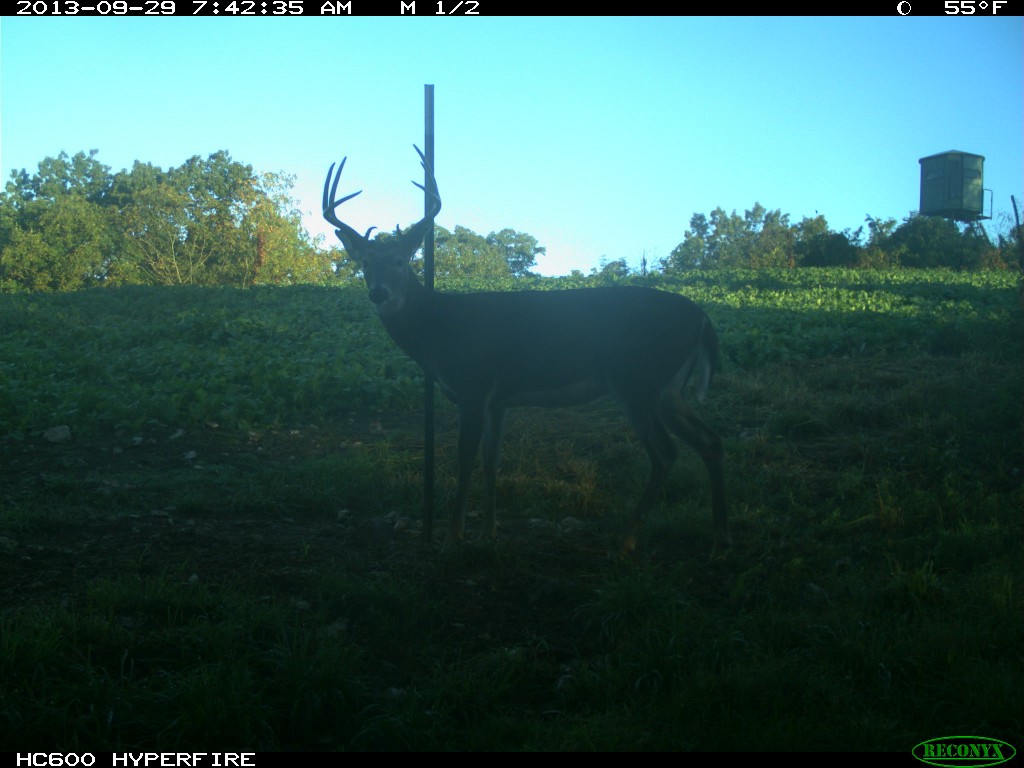Category: Deer Hunting
Food Plot Benefits: Capitalizing On The Cold
During late August when the temperatures are soaring and sweat pours from your body, it is tough to be excited about the work required to plant food plots. It is strenuous work that seems lost for many months. However during December and January you may be rewarded for your work!
This week has been frigid in the Ozarks and the food plots that were planted in August have been great stand locations. It is alternative methods season in Missouri and we have been taking to Redneck Blinds that overlook large feeding plots with hopes of seeing smoke pour out of the black powder rifle!
Keying in on the fact that deer need to eat to stay warm, we had high hopes that a hit list buck would come to chow down on the Eagle Seed food plots. The first sit this week we were not disappointed. Just before dark a hit list buck we call Two Face appeared in the bushes at the edge of the field. Sadly, he out-smarted us and never left cover to present a kill shot. The very next night Grant’s dad, Glen Woods, joined us for an afternoon hunt. Once again, the bucks hit the food plot just before dark. This time the deer hung around a little too long and Glen Woods dropped a buck where he stood!
We will continue to hunt evening food sources after Christmas and we hope you are blessed with the opportunity to do the same! Good hunting and may everyone be blessed with a prosperous and happy New Year!
Chasing Whitetails together,
Brian
Planning For Muzzleloader Season
For many whitetail hunters we’ve reached the late season post rut phase and it’s time to switch gears! We’ve been hunting trails, bottlenecks, and food plots lately but as we set aside our Prime bows and pick up our muzzleloaders for the opening of primitive season Saturday we’ll take a little time to talk about our strategy.
As you’ve heard me talk about recently the second rut is generally sometime during December here at The Proving Grounds. It’s caused by female fawns reaching approximately 60 or 70 pounds which triggers puberty and makes them receptive, and as every deer hunter knows, a hot doe is the number one attraction for a whitetail buck. The greatest thing about the second rut is unlike a mature doe who seeks cover when she becomes receptive, doe fawns go about their normal schedule. They are still going from cover to food, regardless if they are receptive or not.
Checking our Reconyx cameras recently I’ve noticed several bucks nudging doe fawns around food plots, even a couple hit list bucks! This makes them very prone to following hot doe fawns into a food plot during daylight hours! Even better!
Another great advantage of late season hunting over early season is frost. This time of year here at The Proving Grounds we usually receive a frost every morning, and this frost can be extremely heavy at times! During the cold weather months deer obviously are very concerned with staying warm, and like you and I when we’re trying to stay warm we don’t typically eat ice cream or any other frozen food! Putting this in hunters terms, deer don’t usually feed while there is a heavy frost on; they can be seen feeding mid morning (like the doe fawn we caught Trashman chasing last year) or they’ll feed more heavily in the afternoons.
Late season is one of my favorite times to hunt whitetails! You can usually be more successful hunting in the afternoons than mornings, and if you find a lot of doe fawns using the area, hang tight because a hit list buck will most likely make an appearance there.
Saturday afternoon, weather permitting, Grant and I will take to the field in hopes of finding that hot doe fawn with a hit list buck not far behind! Good luck to everyone headed out and be safe!
Daydreaming of whitetails,
Adam
New Hunting Strategies For The Late Season
If you are like us here at GrowingDeer.tv we have entered late season hunting with a buck tag still in our pocket. As any hunter knows that buck tag will burn a hole straight through your favorite pair of pants. Luckily, late season hunting is a great time to punch that tag! What can you do to ensure that buck tag is filled before seasons end?
The rut ends at the end of November here in the Ozark Mountains so we shift our focus to hunting food sources on ridge tops where we get steady winds. A problem we face with hunting ridge tops during late season is a lack of cover.
By this time of year most of the leaves have fallen from the trees leaving our Muddy treestands bare and leaving us vulnerable to being skylined. To solve this problem, Adam and I cut small oak saplings that hold their leaves late into the year, and used them to create cover around the stand. Cedar branches are a viable option as well. With just a hand saw and a few zip ties our favorite stand locations are ready for late season hunting.
Doe fawns are a buck hunter’s best friend this time of year. If quality food sources have allowed this year’s doe fawns to reach 70 pounds they will become receptive. This is what people refer to as the second rut. Mature does that are receptive hide from bucks, but doe fawns generally don’t change their pattern. They go from the cover to the food and back to the cover again, hopefully with a mature buck right behind!
The GrowingDeer Team will be hunting food sources heavily this week, hoping for a receptive doe fawn to bring the big boy right into our kill zone! Good luck and stay warm!
Chasing Whitetails together,
Brian
Hunting Strategies: How To Capitalize On the Storm
Post rut hunting can be very productive. Similar to the pre rut, it comes down to predicting when the deer are going to move and being in your stand when they do.
There is a large cold front pushing through the Midwest. Ice is accumulating as I write this. These conditions have our eyes lit up here at GrowingDeer.tv!
Some might say we are crazy for wanting to hunt the storm and its blustery conditions. If a hunter can chum up enough intestinal fortitude to get out and tough the weather immediately before and directly following a large winter storm, you might just find yourself gripping a big buck’s antlers.
Deer frequently have increased daytime deer activity just before and after abnormal weather. Many times before a large winter front I have observed deer moving to food in an almost frantic fashion. As a hunter, I would hate to miss that! Once the storm hits I usually stay in the warmth of my house as the deer are likely doing the same – seeking cover. Keep a watchful eye and when the first calm hours after the storm comes, head back to the woods and capitalize on the deer getting on their feet and moving to food.
A winter storm can be a great tool to use for bagging your next hit list buck. Remember to hunt on either end of the storm. That’s what the GrowingDeer Team will be doing this week, and just maybe we can have a repeat of last year’s late season harvest of a hit list buck we called “Trashman” (watch GDTV 163 here). Good hunting and stay warm!
Chasing Whitetails together,
Brian
New Whitetail Strategies For Post-Gun Season
We’ve made our way through Missouri rifle season and are closing out the month of November. We’re putting up our Winchester boxes and grabbing our Prime bows and heading back to the field in hopes of finding that hit list buck! It’s time now to draw up a game plan for the late season or “post gun season.”
Weekly readers of our blog recall Brian writing about our hunting strategies for the last few days of rifle season. During those final days of rifle season, we saw more and more does with fawns and even some large groups of does and fawns. Along with observing their movement patterns and preparing our game plan for our upcoming hunts we’ll focus on one thing, food plots. As Brian mentioned, the does and fawns will be going to the plots to feed while the bucks will be following hoping to find a hot doe. Chances are most of the does will already be bred but there is one variable that’s still in play: the “second rut.” This is the time frame when doe fawns have reached approximately 70 pounds and enter puberty making them receptive for breeding.
Determining the time frame when this occurs depends heavily on the food sources available. A doe fawn that lives in agriculture country where there are plenty of crops to eat will come into estrus sooner than would a doe fawn in heavily populated forests. In our area typically the “second rut” will occur around the middle to late December. However, based on the size of some of the fawns on The Proving Grounds this year it looks like it could be really soon!
That one reason alone is exactly why we’ll be monitoring our Reconyx cameras over the next few weeks and finding those food plots with the most activity. First we’ll look to find the does and fawns frequently visiting the food plot and then we’ll wait for a hit list buck to show his face. This is exactly what Grant and I did last December when we had our encounter with Trashman (watch episode 163 here).
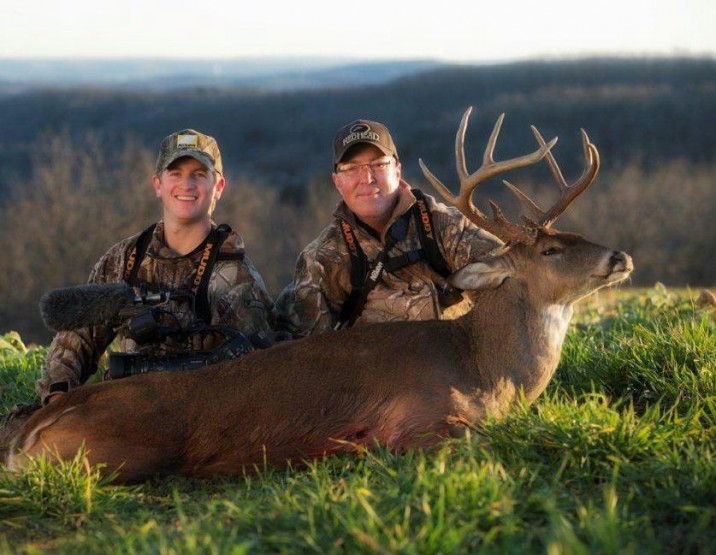
After we identify the food plot does and fawns are frequently visiting we will wait for a hit list buck to show his face.
That’s our game plan! Be sure to check out upcoming episodes of GrowingDeer.tv to see if it all comes together!
Daydreaming of whitetails,
Adam
How We’ll Be Hunting The Last Days Of The Rut
Rifle season has been open in Missouri for six days and we have been hunting hard. It appeared from hunts early during the week that most bucks were tending does and not moving much. Hence hunting thick cover was the best option. However, there are a few things that indicate deer movement will be picking up over the final days of rifle season.
Our observations lead us to believe that does are leaving bucks and pairing back up with their fawns. This means that the majority of does have now been tended by bucks, the bucks will be on the move looking for those last few does that have yet to become receptive.
The whitetail gestation period is 200 days long. This means all does that conceived during the first two weeks of November, the heaviest part of the rut, will have their fawns in middle to late May. Every year there are some newborn fawns that we see as late as the second week of June. Back dating 200 days from when we observed those mid-June fawns confirms that some does are bred through the last week of November. There’s still time to use rut hunting strategies. In fact, bucks will likely be moving more during the next week or two as fewer does will be receptive and there will be more competition for those does.
The last few does that become receptive will have several bucks after them so we suggest forming your hunting strategies this week around where the does will be. There is a large cold front pushing into the Midwest so they will be hitting the food sources in the evenings. The GrowingDeer.tv Team will be hunting a combination of cover in the mornings, and Eagle Seed Broadside food plots in the afternoons in hopes those last few receptive does pass through with a hit list buck not far behind.
Chasing Whitetails together,
Brian
All Signals Go: Time To Hunt The Rut!
It’s that time of year again, the season that every whitetail hunter has laid in bed and dreamed about for the last twelve months. It’s the rut! Hunters wait all year for this magic time of chasing whitetails, but how do we confirm it’s really here?
I spent the day yesterday checking Reconyx trail cameras in preparation for hunting the rifle season this weekend. While out I made a few key observations about the stage of the rut.
I noticed that not a single scrape that we have been monitoring showed any signs of recent use. Falling leaves had covered them. This indicated that the majority of the does are now receptive and bucks no longer need to check scrapes to determine the status of deer in the area. Receptive does are emitting enough scent that the bucks know the status of does and spend their time seeking and tending receptive does versus checking scrapes.
Secondly, I observed three different sets of fawns without a mature doe nearby. When does begin to be harassed by bucks they often leave their fawns for 24-48 hours and seek thick cover in hopes of avoiding aggressive bucks.
These and more signs all indicate it’s currently the lockdown phase of the rut in the Ozark Mountains. If that’s the case where you hunt, I suggest finding some thick cover in hopes of catching that big buck searching for a receptive doe. That’s where the GrowingDeer.tv Team will be hunting! Hopefully things turn out like the rifle opener two years ago (watch GDTV #104 here) when Grant and Adam had success out of a Redneck Blind using this strategy.
Chasing Whitetails Together,
Brian
The Rut Switch
I’ve heard from hunters throughout most of the whitetail’s range this week and most of them are asking “When will the rut start?”
The rut doesn’t simply “start.” There will be a few does that become receptive then more and more will become receptive. Almost all bucks sense the coming surge of does becoming receptive, probably through pheromones deposited by does at scrapes and simply throughout does daily activities.
Bucks become aggressive toward other bucks and tend to spend a bit more time checking areas where does are or have been before most does are receptive. However, this heightened buck activity can occur mostly during the hours of darkness.
This is because fear/survival is still the primary motivation for mature bucks. It’s not until bucks are pursuing a receptive doe or several does in the area are receptive and bucks are aggressively seeking a receptive doe (the area is full of the pheromones produced by receptive does) that bucks become less cautious and tend to alter the time and locations of their activity patterns that makes them more visible than other times throughout the year.
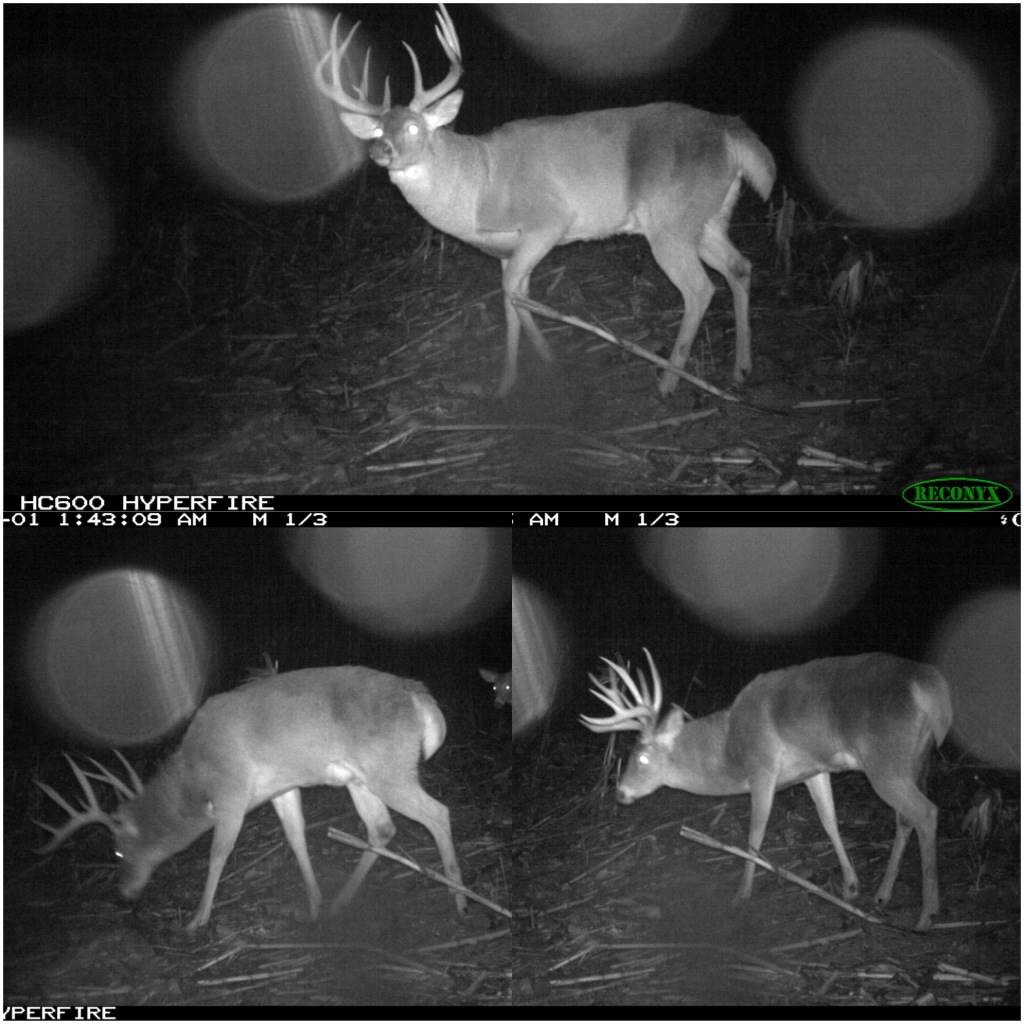
Heightened buck activity can occur mostly during the hours of darkness because fear/survival is still their primary motivation.
This change of focusing primarily on survival and moving primarily at night to aggressively seeking does throughout the day can occur within a few days. This is especially true if the adult sex ratio is close to being balanced (1 adult buck to 1 adult doe).
Usually the tighter the adult sex ratio (even to the point of being skewed toward bucks) the earlier during the year increased daytime activity of bucks will occur and the more intense the rutting action. This simply appears to be due to increased competition for does.
I’ve hunted herds with an adult sex ratio skewed toward does (true for most whitetail herds due to over harvest of immature bucks and lack of doe harvest) and herds that were managed for a balanced or even skewed toward bucks adult sex ratio. There’s no comparison of the pre rut and rut action experienced by hunters between the two differently managed herds.
Hunters that have worked to achieve a balanced adult sex ratio (they’ve passed immature bucks and harvested ample does) are rewarded with the opportunity to experience intense rutting action and herds that respond well to calls, decoys, etc.
This hunting season don’t simply wish you could experience hunts like you watch on hunting shows. Consider the adult sex ratio where you hunt and if it’s skewed toward does, do your part and bring home some tenderloin from a doe and pass those immature bucks that seem to always offer a shot. You’ll be amazed at how good the hunting can be anywhere in the whitetails’ range if the herd is managed properly.
Growing and hunting deer together,
Grant
Tips For Deer Hunting During The Pre-Rut Phase
I’m sitting at my friend’s place in Kentucky. It’s raining. I really dislike driving seven hours to sit inside and write rather than being outside and hunting. However all is not lost as it’s the pre rut! The pre rut is a time when bucks are pumped full of testosterone but most does are not receptive yet. Therefore bucks tend to move a lot seeking one of the few does that are receptive. In simple terms, bucks are more likely to be active during daylight hours during the pre rut.
Pre rut action is often substantially elevated when a cold front occurs. This is especially true if the cold front occurs during the first part of the pre rut as there are fewer does receptive and the bucks are searching throughout their entire range.
A cold front often follows rains this time of year. So, while I missed hunting this morning the action may be great this afternoon and tomorrow! Bucks should be moving as the temperatures are forecast to drop throughout the day and tomorrow!
Bucks often will tend scrapes just after a rain during the pre rut. In fact, the pre rut is the best time of year to hunt near scrapes. So, I’ve selected a stand location this afternoon in a strip of hardwoods that connects to larger sections of woods. There are scrapes along this strip of hardwoods and I can approach with the wind in my face. I can approach, hunt, and leave without alerting deer using this travel corridor.
Cold fronts during the Pre Rut often result in increased buck activity. Selecting stands that can be approached without alerting bucks while approaching, hunting, and leaving the stand will increase your chances of tagging a mature buck.
The rain should let up soon and I’m about ready to head to the stand. I hope you have an opportunity to get out and enjoy Creation during the Pre Rut.
Growing Deer together,
Grant
Deer Hunting: Estimating A Buck’s Age
I’ve received tons of requests to estimate the age of bucks on the GrowingDeer.tv Facebook page recently. It seems one of the toughest bucks to accurately estimate the age of is a 3 ½ year old. On most properties a 3 ½ year old buck appears more mature than most bucks. There will always be some natural mortality– so there will usually be fewer 3 year olds than bucks that are 1 ½ or 2 ½. The shoulders of three year old bucks often appear much more developed than younger bucks.
Another complicating factor is that typically 3 ½ year old bucks have expressed approximately 75% of their antler growth potential. So they are carrying a nice rack! All the above factors make it easy to overestimate the age of 3 ½ year old bucks.
When evaluating a camera survey or – even more importantly – when making a shoot or don’t shoot decision while hunting (Watch GDTV #103), I try to focus on body characteristics and not the antlers. I look to see if the buck’s back is straight or bowed (like an old saddle horse). A straight back is an indication that the buck is 3 ½ years old or younger. Likewise I look at his belly. A flat, tight belly is another sign the buck is 3 ½ or younger.
Bucks that are 4 years old or older often have a distinct hump over their shoulders. Three year old bucks can look like they have a hump over their shoulder in some postures – but 4 year old and older bucks almost always appear to have a hump over their shoulders in all postures.
Finally, I imagine placing a 2” x 4” tucked tight right behind their front legs and under their chest. Think of this as a balance rod. If the buck obviously tilts toward his rear, he’s most likely 2 years old or younger. If he balances on the 2” x 4” he’s probably 3 ½ years old. If the buck has the shape of a buffalo and would tip toward his head he’s most likely 4 years old or older.
The 2” x 4” technique of aging deer on the hoof has worked very well for me. I hope you have an opportunity to try it from a stand soon!
Growing Deer together,
Grant



